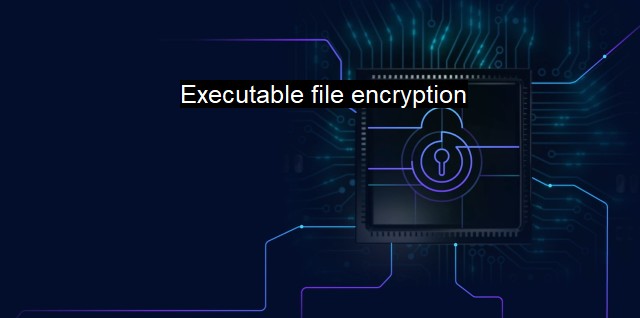What is Executable file encryption?
The Importance of Executable File Encryption in Today's Dynamic Cybersecurity Landscape
Executable file encryption is a concept within the field of cybersecurity and antivirus software, and revolves around the encryption of files that are meant to execute, or run, a particular function on computer systems. Cybersecurity experts often utilize this encryption technique to ensure the security and integrity of sensitive data and information, which may be easily compromised by unauthorized third parties or hackers.Before delving deeper into executable file encryption, it’s crucial to first understand the functionality of an executable file. In simple terms, an executable file is essentially a computer program with the purpose of instructing a computer to perform tasks according to the encoded instructions. Whenever a user or a part of the operating system triggers an executable file, the computer acts upon those instructions inherently built into the file. The most common types of executable files include '.exe', '.bat', and '.scr.' blocks in Microsoft Windows, and the '.app' files on Apple MacIntosh systems.
These executable files, especially in a business environment, carry significant importance as they are used to perform a myriad of sensitive operations tied to the company's resources, operations, and corporate data. With cybersecurity threats continually on the rise, these executable files prove to be an easy target and a potentially significant loophole for unauthorized access. Hence, encrypting these files is a strategic move for data protection.
Executable file encryption is a technique that effectively seals the content of the executable files, therefore transforming them into an indecipherable format. It follows a two-stage process. First is the actual encryption, where the data or program within the executable file is translated into a code that other system processes or third parties cannot easily decipher. The encoding is done using a specific key known only to the authorized users or systems. Second is the decryption, where the encrypted file is decoded back into its original format, using the encryption key, the relevant algorithms, and even the decryption software if needed.
Several methods are used for executable file encryption, including but not limited to secure hashing, public key infrastructure (PKI), symmetric encryption, and Asymmetric encryption. These methods provide distinctive security attributes, from confidentiality and accessibility to integrity and non-repudiation.
Secure Hashing involves the decryption of an encrypted executable file for a set time period, thus allowing authorized users to execute its encoded instructions. Public Key Infrastructure (PKI) leverages two types of encryption keys - a public key to encrypt and a private key to decrypt. As long as the private key remains secure, the data inside your executable file stays encrypted and inaccessible to unauthorized invaders.
Symmetric encryption, often known as secret-key encryption, is where the encryption and decryption keys are the same. Asymmetric encryption meanwhile uses different keys – also known in duality as the public and private keys - for encryption and decryption purposes.
While executable file encryption substantially enhances the security mechanisms, it nevertheless presents certain limitations and challenges. It can potentially slow down the data retrieval processes, increase the complexity of the IT infrastructure, and may indeed be inaccessible should data loss occur without a stable backup system.
Executable file encryption is an indispensable asset for modern-day cyber defensive strategies. It protects against most common forms of cyber threats, such as Ransomware, as attackers will find it doubly tough to insert malware into an encrypted file. Consequently, this method has become an inevitable part of several antivirus software solutions to secure sensitive data and ward off cybercrime threats.

Executable file encryption FAQs
What is an executable file encryption?
An executable file encryption is a process of converting executable files such as .exe, .dll or .com files into encrypted form, making it difficult for cybercriminals to read or access their contents.Why is executable file encryption important in cybersecurity?
Executable file encryption is important in cybersecurity as it helps protect executable files from being tampered, reverse-engineered or exploited by cybercriminals. This helps prevent malware attacks and safeguards sensitive data from unauthorized access.What are the benefits of using executable file encryption?
Some of the benefits of using executable file encryption include enhanced security, protection against malware and exploits, compliance with data protection regulations, and safeguarding software intellectual property.How does executable file encryption impact antivirus software?
Executable file encryption can make it challenging for antivirus software to detect and identify malware as the encrypted files are unreadable. However, most antivirus software today have advanced capabilities to detect malware even in encrypted files.| | A | | | B | | | C | | | D | | | E | | | F | | | G | | | H | | | I | | | J | | | K | | | L | | | M | |
| | N | | | O | | | P | | | Q | | | R | | | S | | | T | | | U | | | V | | | W | | | X | | | Y | | | Z | |
| | 1 | | | 2 | | | 3 | | | 4 | | | 7 | | | 8 | | |||||||